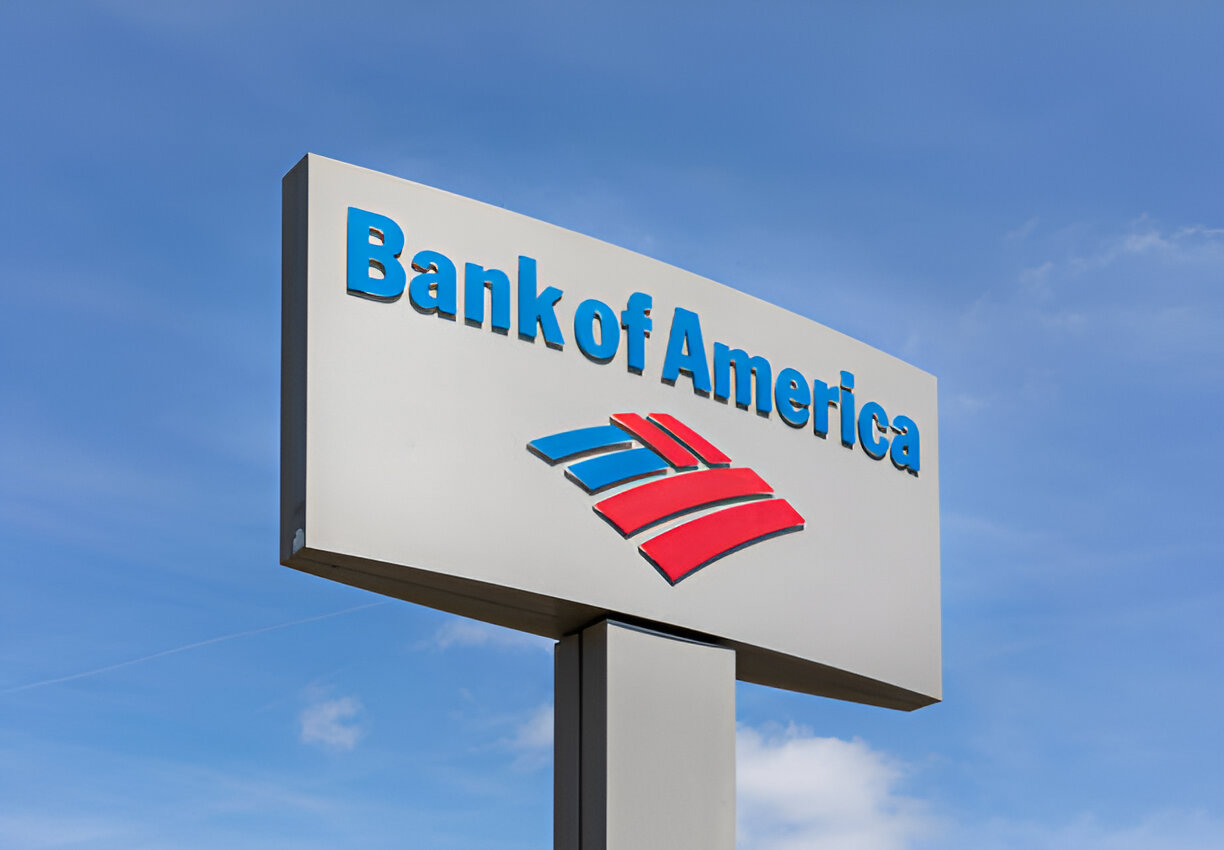A Legacy in Banking
Bank of America, often abbreviated as BofA, is today one of the largest financial institutions in the world, serving millions of individuals, small businesses, and corporations across continents. But behind its towering skyscrapers, global reach, and trillion-dollar balance sheets lies a story of ambition, innovation, resilience, and transformation.
The history of Bank of America is not just the story of a bank—it is a reflection of America’s own financial evolution, from immigrant banking halls in San Francisco to Wall Street dominance.

Early Beginnings: Amadeo Peter Giannini and the Bank of Italy
The roots of Bank of America can be traced back to 1904, when Amadeo Peter (A.P.) Giannini, the son of Italian immigrants, founded the Bank of Italy in San Francisco.
At the time, banks largely catered to the wealthy, leaving working-class immigrants without access to financial services. Giannini saw an opportunity. He opened a bank that welcomed Italian laborers, farmers, and small business owners—offering them savings accounts, loans, and trust.
The Bank of Italy began in a converted saloon, but its mission was revolutionary: banking for the people, not just the privileged.
The Earthquake of 1906: A Defining Moment
Just two years after its founding, the San Francisco earthquake of 1906 devastated the city. Banks across San Francisco collapsed, vaults were destroyed, and panic spread.
Giannini acted quickly. He loaded cash and records onto a horse-drawn cart, hiding them under crates of produce to avoid theft. Setting up shop on the docks with a makeshift desk, he began offering loans—sometimes with just a handshake as collateral.
While other banks waited weeks to reopen, the Bank of Italy was up and running immediately, financing reconstruction and earning the trust of thousands of new customers. This bold move turned Giannini from a neighborhood banker into a hero of the city.
Expansion Through Innovation
Giannini’s vision was bigger than San Francisco. He believed in the idea of a branch banking system, where a network of branches could serve communities across California.
By the 1910s and 1920s, the Bank of Italy was expanding rapidly across the state, offering consistent services to rural farmers, urban immigrants, and small businesses. This approach was revolutionary in an era when most banks operated only locally.
Giannini also championed lending to ordinary people, not just wealthy elites. His bank financed farmers, homebuyers, and even helped fund the early movie industry in Hollywood.

From the Bank of Italy to Bank of America
In 1928, the Bank of Italy merged with Bank of America, Los Angeles, a move that expanded its footprint and gave the institution a new name.
By 1930, the combined bank officially became Bank of America National Trust and Savings Association—commonly shortened to Bank of America.
This new name reflected Giannini’s ambition: to create a financial institution not limited to California but serving all of America.
The Great Depression and New Banking Models
The 1930s brought the Great Depression, a period when many banks failed. But Giannini’s Bank of America survived and even thrived.
It was during this era that Bank of America introduced new financial innovations, including low-cost home loans and small business financing. By helping families keep their homes and supporting entrepreneurs, the bank reinforced its reputation as the “people’s bank.”
Financing the Golden Gate Bridge
One of Bank of America’s most legendary contributions came in the 1930s: financing the Golden Gate Bridge in San Francisco.
At the time, many investors thought the project was too risky and impractical. But Bank of America stepped in, providing crucial funding. The Golden Gate Bridge, now one of the most iconic landmarks in the world, stands as a testament to the bank’s willingness to back ambitious ideas.
Post-War Expansion: Banking for the Middle Class
After World War II, the United States entered a period of economic boom. Millions of returning soldiers sought homes, cars, and education. The middle class was rising, and demand for banking services surged.
Bank of America led the way in introducing new financial products. It pioneered auto loans and home mortgages, giving ordinary Americans access to credit that helped fuel suburban growth.
By the 1950s, Bank of America had become the largest bank in the United States, with branches across California and beyond.

The Birth of the Credit Card: BankAmericard
One of the most important innovations in global finance was born at Bank of America. In 1958, the bank introduced the BankAmericard, the first general-purpose credit card in the United States.
Initially launched in Fresno, California, the card allowed consumers to make purchases on credit and pay later. Though it faced early challenges with fraud and misuse, the concept was groundbreaking.
By the 1970s, BankAmericard had evolved into Visa, today one of the largest payment networks in the world. This single innovation reshaped consumer spending and global commerce.
National and Global Expansion
Through the second half of the 20th century, Bank of America expanded beyond California to become a truly national bank.
By the 1980s, it had entered international markets, setting up operations in Latin America, Europe, and Asia. Its mission had evolved from serving Italian immigrants in San Francisco to serving customers worldwide.
Challenges and Restructuring in the 1980s–1990s
Despite its growth, the bank faced serious challenges in the 1980s. A combination of poor real estate loans, global debt crises, and economic slowdown weakened its financial standing.
By the late 1980s, Bank of America was struggling, forcing leadership changes and restructuring.
The 1990s marked a period of mergers and acquisitions, with Bank of America acquiring several regional banks and strengthening its position. This culminated in its 1998 merger with NationsBank, headquartered in Charlotte, North Carolina.
This merger created the modern Bank of America Corporation, one of the largest banking institutions in the United States.
The 2000s: Becoming a Financial Giant
The new century brought rapid expansion. Bank of America acquired FleetBoston Financial (2004), making it the largest bank in the U.S. by assets.
In 2008, during the global financial crisis, Bank of America acquired Merrill Lynch, a move that expanded its investment banking and wealth management capabilities. This acquisition turned Bank of America into a financial giant with both retail and Wall Street presence.
The Global Financial Crisis: Survival and Criticism
The 2008 crisis, however, was a turning point. Bank of America, like other major banks, faced massive losses from mortgage-backed securities. Its acquisition of Countrywide Financial, a major mortgage lender, added to its problems due to bad loans.
The U.S. government provided billions in bailout funds to stabilize the bank. While Bank of America survived, it faced years of lawsuits, fines, and reputational damage.
Despite the turbulence, Bank of America emerged from the crisis stronger, albeit with a renewed focus on risk management and compliance.
Bank of America in the Modern Era
Today, Bank of America is a global financial leader. Headquartered in Charlotte, North Carolina, it serves more than 67 million consumer and small business clients worldwide.
It operates across four main divisions:
- Consumer Banking
- Global Wealth & Investment Management (through Merrill Lynch)
- Global Banking
- Global Markets
It has also embraced digital transformation, with tens of millions of active mobile users and cutting-edge AI-driven services like Erica, its virtual financial assistant.
Commitment to Sustainability and the Future
In recent years, Bank of America has emphasized sustainability and social responsibility. It has pledged billions toward green financing, renewable energy projects, and community development.
As climate change and social equity take center stage, the bank positions itself not just as a financial giant but as a partner in building a sustainable future.
Conclusion: From Saloon Counter to Global Giant
The history of Bank of America is, in many ways, the history of modern American banking. From A.P. Giannini’s humble Bank of Italy in 1904 to the multi-trillion-dollar financial empire it is today, the journey reflects resilience, innovation, and bold risk-taking.
Whether it was financing earthquake recovery, backing the Golden Gate Bridge, inventing the credit card, or navigating the storms of financial crises, Bank of America has left an indelible mark on global finance.
It began as a bank for immigrants and working-class families. Today, it stands as a bank for the world—an institution that continues to shape the way we save, borrow, invest, and dream.

